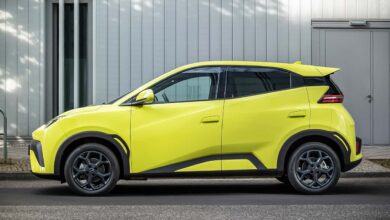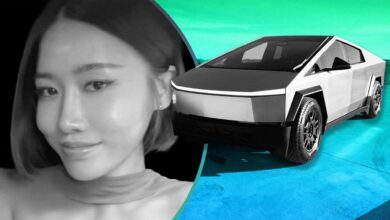Tesla Wants To Deploy Robotaxis. Federal Investigators Have Questions

- Federal safety investigators want to know how Tesla’s robotaxis will handle poor weather conditions.
- The NHTSA also wants to know if the robotaxis will be Level 2 or Level 3 on the SAE’s Driving Automation chart.
- Currently, Tesla’s so-called Full Self-Driving (Supervised) is classified as Level 2.
The National Highway Safety Administration (NHTSA) has sent Tesla a comprehensive list of questions regarding the automaker’s robotaxi rollout. Specifically, federal safety investigators want to know how Tesla’s so-called Full-Self Driving (Supervised) advanced driver assistance system operates in poor weather conditions, such as “sun glare, fog, airborne dust, rain, or snow.”
This is something experts have questioned about the EV maker’s self-driving taxi efforts ever since the steering wheel-less Cybercab debuted late last year. Currently, Tesla’s FSD software relies on several video cameras to “see” the road. Despite its name, the system is yet to be autonomous because the driver needs to keep their hands on the steering wheel.

The Tesla Cybercab doesn’t have a steering wheel.
Photo by: InsideEVs
As first reported by Reuters, the NHTSA wants to know what hardware and software systems Tesla will use in the development and deployment of its robotaxi service, as well as “Tesla’s position on the SAE Level classification.” Currently, FSD Supervised is classified as a Level 2 system on the Society of Automotive Engineers’ Levels of Automation chart. For a vehicle to be considered autonomous, it has to be classified as Level 3 at a minimum. This way, the driver is not responsible for the car’s actions.
Furthermore, the NHTSA has requested answers on multiple topics, including how Tesla is monitoring disengagements of the self-driving system, how many disengagements and interventions have been recorded so far, and how emergency situations will be handled.
The letter was sent after Tesla posted a message on one of its X accounts last month, claiming that its early-access robotaxi service is already live in Austin, Texas, and the San Francisco Bay Area. The company said that it had completed over 1,500 trips and had covered over 15,000 miles.
Currently, the service is only available to Tesla employees, and the cars–regular Model Y crossovers–have a safety driver. “This service helps us develop and validate FSD networks, the mobile app, vehicle allocation, mission control, and remote assistance operations,” the company said in its message.
Tesla CEO Elon Musk claimed that when the service is fully operational, the cars will use a yet-to-be-released “unsupervised” version of the FSD software.
The long list of questions sent by federal safety investigators comes after the NHTSA opened an investigation into Tesla’s FSD Supervised system in October, following four reported crashes in low-visibility conditions.
Source link


